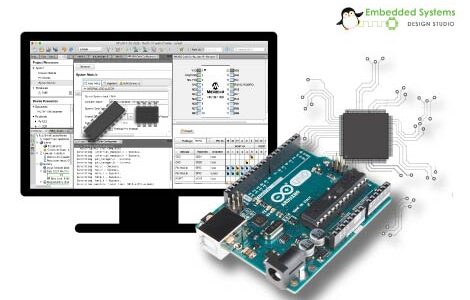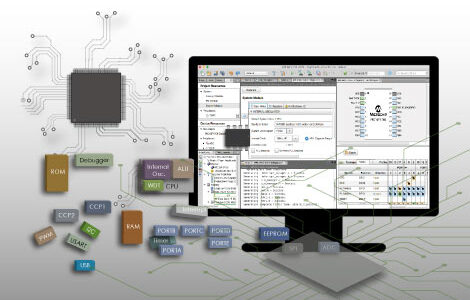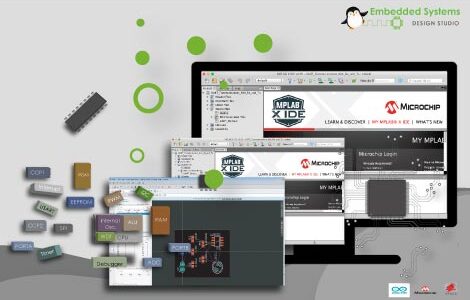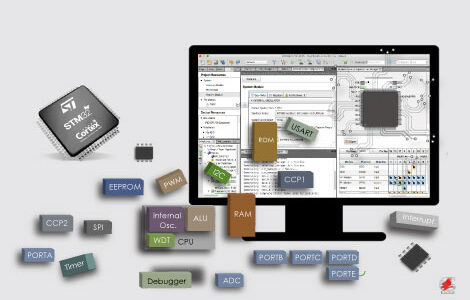This course is designed for engineers, students, and professionals who aim to harness the power of dsPIC microcontrollers for advanced embedded applications. dsPIC Digital Signal Controllers (DSCs) are uniquely suited for digital signal processing tasks, blending the functionality of a microcontroller and a DSP core. The course focuses on mastering dsPIC microcontrollers for control, signal processing, and real-time applications.
Course Title:
Mastering dsPIC Digital Signal Controllers: From Fundamentals to Real-Time Applications
Course Objectives:
- Provide a deep understanding of the dsPIC architecture and its DSP capabilities.
- Teach participants how to program and debug dsPIC DSCs using MPLAB X IDE and XC16 Compiler.
- Enable practical knowledge of signal processing, control systems, and real-time applications using dsPIC DSCs.
- Equip participants with skills to develop and test real-world projects such as motor control, audio processing, and digital power conversion.
Target Audience:
- Engineers and professionals looking to use dsPIC for advanced embedded control and DSP applications.
- Students interested in learning DSP and real-time control using microcontrollers.
- Embedded system developers transitioning to signal processing and control system design.
Prerequisites:
- Familiarity with embedded systems and C programming.
- Basic understanding of DSP concepts (e.g., Fourier Transform, filtering).
- Knowledge of basic electronics and microcontroller fundamentals.
Course Duration:
12 weeks (4-6 hours/week), with optional self-paced learning.
Course Outline and Learning Modules
Module 1: Introduction to dsPIC Architecture (Week 1-2)
- Overview of Microchip dsPIC family and its applications.
- Features of dsPIC DSCs:
- Harvard architecture and DSP engine.
- Data and program memory.
- Peripherals for motor control, power conversion, and audio processing.
- Setting up MPLAB X IDE, XC16 Compiler, and hardware tools (e.g., dsPIC33 Development Board).
- Writing and running your first program: LED blink with GPIO.
Hands-on Activities:
- Pin configuration using MPLAB Code Configurator (MCC).
- Blinking an LED and reading a button press.
Module 2: Digital Signal Processing with dsPIC (Week 3-4)
- DSP Fundamentals:
- Fixed-point and fractional arithmetic in dsPIC.
- Multiply-Accumulate (MAC) instructions.
- DSP core features: Barrel shifter, saturation, and rounding.
- DSP Programming:
- Implementing Finite Impulse Response (FIR) filters.
- Designing and implementing Infinite Impulse Response (IIR) filters.
- Performing Fast Fourier Transforms (FFT) for frequency analysis.
Hands-on Activities:
- Implementing a real-time FIR filter for audio signal noise reduction.
- Using FFT to analyze input waveforms and display frequency components.
Module 3: Peripheral Interfacing and Real-Time Applications (Week 5-6)
- Timers and PWM for control and signal generation.
- ADC and DAC for analog signal processing.
- UART, SPI, and I2C for communication with external modules.
- DMA for high-speed data transfer in real-time applications.
Hands-on Activities:
- Generating PWM signals for motor control.
- Reading and filtering analog sensor data (e.g., temperature, accelerometer).
- Interfacing an external EEPROM using I2C.
Module 4: Motor Control Applications (Week 7-8)
- Overview of motor control principles: DC motors, BLDC motors, and stepper motors.
- Understanding Field-Oriented Control (FOC) for BLDC motors.
- Implementing motor control using the dsPIC motor control library.
- Encoder and Hall sensor interfacing for motor feedback.
Hands-on Activities:
- Controlling a DC motor using PWM.
- Implementing closed-loop control for a BLDC motor with Hall sensors.
- Speed control of a stepper motor using UART commands.
Module 5: Digital Power Conversion (Week 9-10)
- Introduction to digital power conversion applications.
- Using dsPIC for:
- Buck, boost, and buck-boost converters.
- Inverters and rectifiers for AC/DC conversion.
- Maximum Power Point Tracking (MPPT) for solar applications.
- DSP techniques for power conversion, such as power factor correction.
Hands-on Activities:
- Implementing a DC-DC buck converter with PID control.
- Designing and testing an inverter for AC signal generation.
Module 6: Audio and Signal Processing Applications (Week 11-12)
- Audio processing using dsPIC:
- Generating audio tones and waveforms.
- Implementing audio equalizers and echo cancellation.
- Digital communication: Implementing modulation and demodulation schemes (e.g., ASK, FSK).
- Real-time data logging and analysis.
Hands-on Activities:
- Creating an audio tone generator using a DAC.
- Implementing a basic audio equalizer for music playback.
- Simulating and testing an FSK-based digital communication system.
Capstone Project (Optional Extension)
Participants will develop a complete embedded system application using dsPIC.
Example Projects:
- Motor Control System: Implementing FOC for a BLDC motor with speed and position control.
- Digital Power Supply: Designing a programmable DC-DC converter with a touchscreen interface.
- Audio Processing Application: Building a real-time audio equalizer or noise cancellation system.
- Industrial Monitoring System: Real-time data acquisition and control using multiple sensors and communication protocols.
Course Features:
- Practical Learning: Real-world project-based approach for every module.
- Hardware Support: Guidance on selecting and configuring dsPIC development boards.
- Comprehensive Resources: Sample codes, reference manuals, and circuit diagrams.
- Interactive Q&A Sessions: Direct support for troubleshooting and design queries.
- Certificate of Completion: Awarded upon successful completion of the course.
Learning Outcomes:
By the end of this course, participants will:
- Gain a deep understanding of dsPIC architecture and its DSP capabilities.
- Develop real-time applications for motor control, power conversion, and audio processing.
- Be proficient in DSP programming, including FIR/IIR filters, FFT, and signal generation.
- Implement and debug advanced embedded systems using dsPIC microcontrollers.
- Be prepared for professional roles in embedded systems and digital signal processing.











